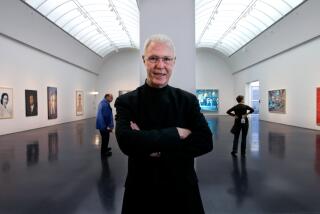Cultural Rainbow Delights Irvine Crowd
- Share via
IRVINE — Paul Clary had circled the food court at the 1991 Kaleidoscope Festival for 20 minutes and still couldn’t decide whether to go Chinese, Indian, Mexican, Italian or Jamaican for lunch.
The choices were much like the festival itself, he observed: everything colorful, exotic and inviting.
“This is really a reflection of the wonderful variety of peoples in the world and the great diversity in this country and Orange County,” said the 45-year-old electrical engineer from Fullerton, who finally decided on a compromise of chicken tandoori, Mexican fruit soda and Italian ice cream.
Thousands of others interested in savoring the food, art, music and dance of more than 35 ethnic groups descended on UC Irvine’s Aldrich Park on Saturday for the first of two days of festivities designed to pay tribute to the county’s multicultural heritage.
Sponsored by the Historical and Cultural Foundation of Orange County, the Kaleidoscope Festival was first held in 1989 to close the county’s centennial celebration. The event attracted more than 28,000 people over two days; sponsors hope at least to match that attendence this time around.
Cultural displays range from a traditional Mexican Dia de los Muertos (Day of the Dead) altar to a Japanese teahouse and an African-American hair-weaving demonstration.
The entertainment is no less diverse. Such attractions as American Indian tribal dancers, Caribbean fire dancers, Israeli klezmer musicians and Scottish bagpipers perform continually on three stages.
The Chinese Lantern Festival exhibit was among the favorites for youngsters. The festival, which dates from the Han Dynasty (206 BC to AD 220), signals the close of Chinese New Year’s festivities and features colorful lanterns filled with riddles.
On Saturday, children gathered around to try their luck with brain-twisters, such as, “Why is the nose in the middle of the face?” (The answer, which nobody could get quite right, is: “Because it is the scenter.”)
The festival provided fertile ground for some very personal cultural exchanges Saturday. Malissa Cox, 10, delighted visitors at the Japanese tea ceremony display with her interest in Japanese customs and knowledge of the language, which she picked up from the mother of a schoolmate.
“I can count to six and say good morning, good afternoon and good evening,” said Malissa, who attends Benito Juarez Elementary School in Anaheim.
Malissa, who sported a green frog painted on her left cheek, said she was attracted to Japanese culture by the colorful kimonos and the intriguing subtitles on English-language Japanese programs that her family watched when she was younger.
Malissa’s father, Michael Cox, said the youngster had a choice of activities she could have attended Saturday, including swimming, an expedition to the mall and a museum trip but chose the Kaleidoscope Festival.
He said the festival is a good experience for his daughter. But for Malissa it was “just more fun.”
The festival provided an unexpected link to the past for Ray Jones, 66, of Santa Ana, who discovered the probable source of a hand-woven basket that he had picked up more than 40 years ago while stationed at Jacksonville Naval Air Station in Florida.
Jones walked into the African-American pavilion and noticed that one of the baskets on display by weaver Lilly Howard was virtually identical to the old basket he still owns. He had picked it up at a little roadside stand somewhere outside of Charleston, S.C., while making a trip to Washington.
That was all familiar to Howard, 39, a resident of Mt. Pleasant, S.C., whose family has operated a roadside basket stand on Highway 17 outside of Charleston for decades.
“It’s probably the same stand,” she said.
Howard, who said she has baskets on display at the Smithsonian Institution, was grateful to hear about the basket but not surprised that it’s still in great shape, soft and flexible.
Making the baskets--composed of sweet grass, palmetto leaves and pine needles harvested in the sand dunes and marshes of the Mississippi Delta region--is a generations-old family tradition that Howard has passed on to her own daughter.
“It takes a lot of patience, and it’s hard on your hands, but I don’t think there is anything else I would want to do,” Howard said. “I can create most anything with these fingers.”
The Kaleidoscope Festival runs today through 6 p.m.
More to Read
Sign up for Essential California
The most important California stories and recommendations in your inbox every morning.
You may occasionally receive promotional content from the Los Angeles Times.











